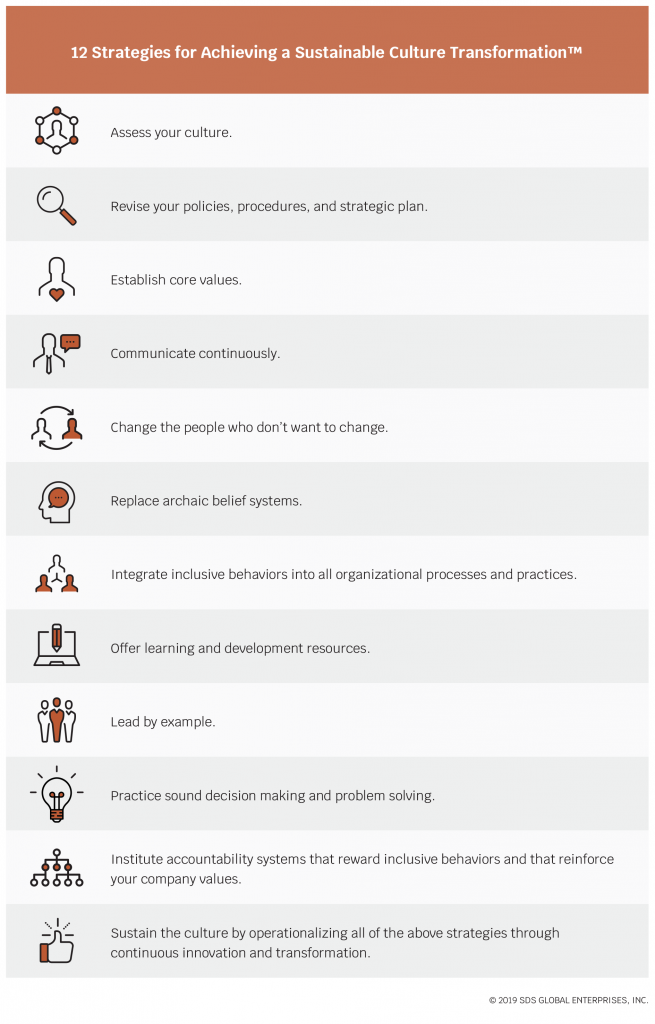As a 30-year HR and workforce management expert, a former global chief diversity & inclusion officer for several major organizations, and a certified leadership coach, I speak from experience when I say that training is not the cure to responding to poor decisions made by management, or to public outrage when revelations of bad behavior go viral and threaten your company brand.
In my consulting firm we often receive calls to conduct a number of training programs, ranging from leadership development to diversity, inclusion, unconscious bias, anti-harassment, team effectiveness, trust building, and other similar topics. The majority of the time, these requests are a direct response to some unfortunate incident, such as a lawsuit (or the threat of one), increased employee complaints, high disengagement or turnover, or a response to a company crisis featured in the national news that has generated protest and public outcry.
Companies Rush to Training
In recent months, companies such as United Airlines, Facebook, Wells Fargo, Nike, Mattel, General Motors, Starbucks, and Uber have been faced with crisis after crisis that have forced them to address issues related to their culture. Last year we saw a rush to training when Starbucks was forced to address racial bias issues that occurred in one of its stores and involved a front-line supervisor. Starbucks closed 8,000 stores to hold mandatory training for its entire workforce. Many companies, including some of those listed above, followed suit by mandating Diversity & Inclusion and Racial bias training. To address the company’s largescale and fundamental culture problems, Uber piloted a corporate education program like that of a university model. In the first few months of its launch, more than 6,000 out of Uber’s 15,000 employees signed up to take the classes in leadership and strategy.

I do applaud companies that are at least willing to take such bold moves as closing all of their stores to educate staff through mandatory training. I also give credit to companies that are at least willing to do something to address the issue – such as terminating the employment of the violators, airing new commercials as a PR campaign to reinvent their brands, and hosting “listening tours”. However, I do wonder what happened after the training was concluded and employees went back to work. My response to clients in these types of situations is that a few hours of training, a 60-second commercial, or a one-hour focus group won’t result in behavior, attitude, or mindset shifts. The reality is that training is not the fix. Culture transformation is the solution.
Training should not be the first step, nor should it be the only step. If the necessary systems are not in place to drive sustainable change, this huge investment of training time, money, and resources will be deemed a futile exercise. It’s what happens beyond these activities and in the culture of the company on a daily basis that will make the difference.
What is Workplace Culture?
The topic of corporate culture has been active in some organizations for decades, but it is now a global issue as more institutions are addressing organizational health. Culture consists of the norms, values, behaviors, and attitudes that the company rewards or holds in high esteem.
In a recent article published in Harvard Business Review, culture was described as being like the wind: “It is invisible, yet its effect can be seen and felt. When it is blowing in your direction, it makes for smooth sailing. When it is blowing against you, everything is more difficult.”
Company culture can make or break your brand and reputation among customers and top talent; it can impact employee productivity, engagement, creativity, and retention; and it can affect bottom line profits and company success.
Employees are demanding, at the very least, our workplaces to be more inclusive, welcoming, and respectful; that they create a sense of belonging, and be free from harassment. For some companies with legacy cultures and others that have existed for more than a century, this is an extremely hard change management process. But it’s necessary in this era of demographic shifts, where the global workforce and marketplace are much more diverse, multicultural, and multigenerational, and works more virtually and flexibly. So how does this happen? How do you really move the needle beyond training activities?
I have seen the greatest success in working with my clients to move the needle when they are willing to implement a more comprehensive and robust strategy, rather than a quick fix. So here are my proven steps to successfully transforming culture.

The strategies presented above are not ranked in any particular order, but when we are working with our clients, we always recommend that they start at the “Assess” phase. This is the most critical step in the process because it uncovers and reveals the current state of the company and establishes how much ground work needs to be done. In this first step we conduct a S.W.O.T. analysis, stakeholder interviews with internal and external personnel, a culture audit, and leadership assessments (individually as well as with the senior management team as a group); we also administer employee surveys, and conduct focus groups with staff.
Determining in what order to implement all of the other steps will depend on the company’s resources, appetite for change, the pace that they can or are willing to take, and the amount of work ahead. Of course, the last step in the process should be the “Sustain” phase, because it is important to ensure that all of the work that has been implemented has some stickiness. Ongoing process improvement, evaluation, course correction, and innovation should become a way of life in order to sustain the work.
Culture transformation takes time, effort, energy, and commitment. The process is not a sprint; it’s a marathon and must be approached with a real sense of urgency in order to create the future state.

Culture is Everyone’s Responsibility
the greatest success in culture transformation when leaders at the highest level in the organization take the lead and walk the talk. Every leader and employee in the organization should be held accountable for living the values of the organization. Don’t be the company that has regrets for not making necessary culture changes because it would take too long and cost too much. I imagine that the many companies, the workplace cultures of which have come under scrutiny in recent months, all wish that they did not have to deal with culture transformation in the public’s eye and under such adverse circumstances. It’s bad for their brands and bad for their business and, unfortunately, I’m sure that they will continue to have plenty of company.
My advice and coaching to all CEOs, presidents, chief HR officers, and boards of directors is to heed this call for culture transformation and not just use training as a Band-Aid and a quick fix in hopes that these problems will go away with the changing news cycle. Use the steps listed above and make the commitment to see this as a strategic imperative and an act of innovation and reinvention that will result in long-term business success.









